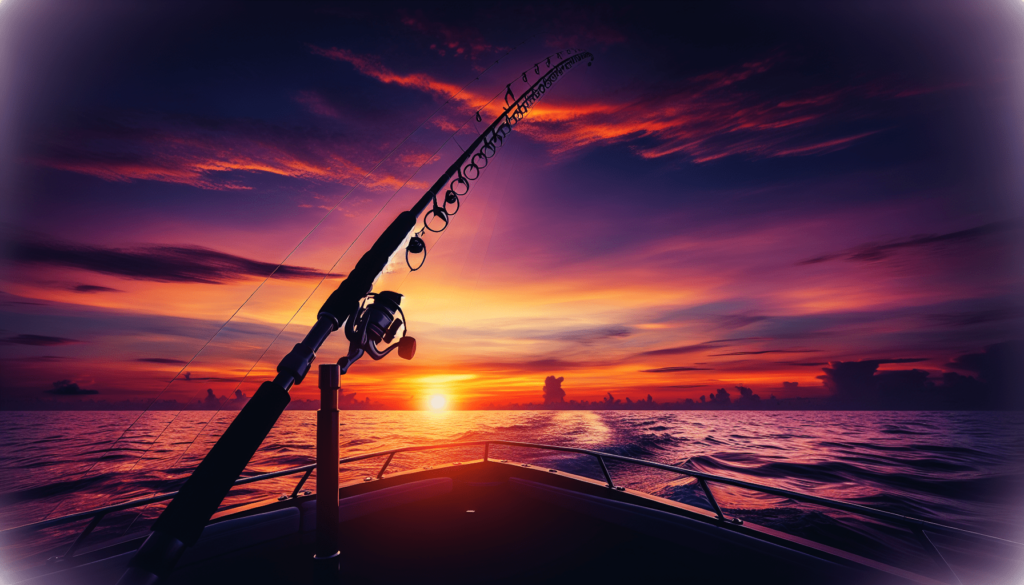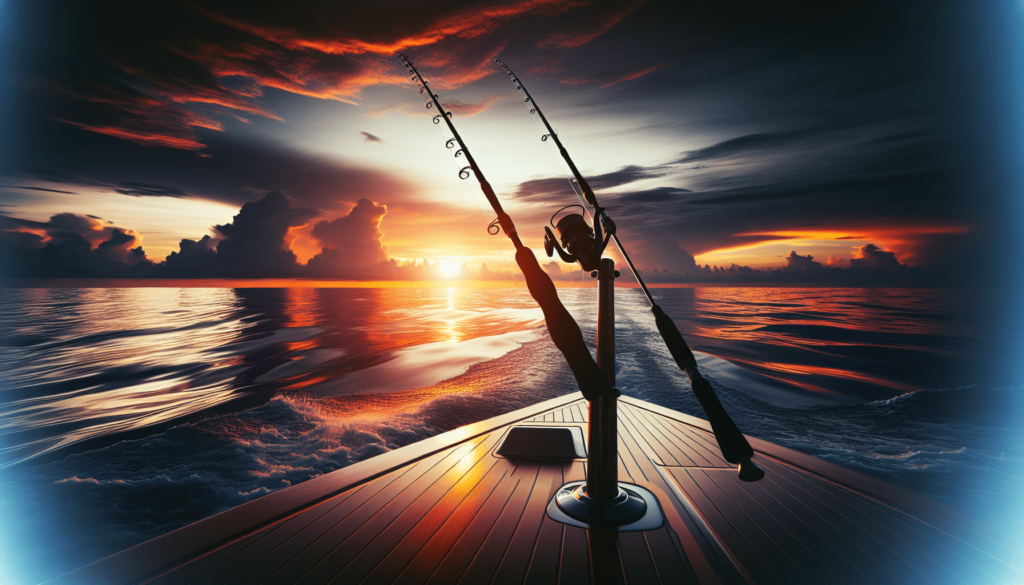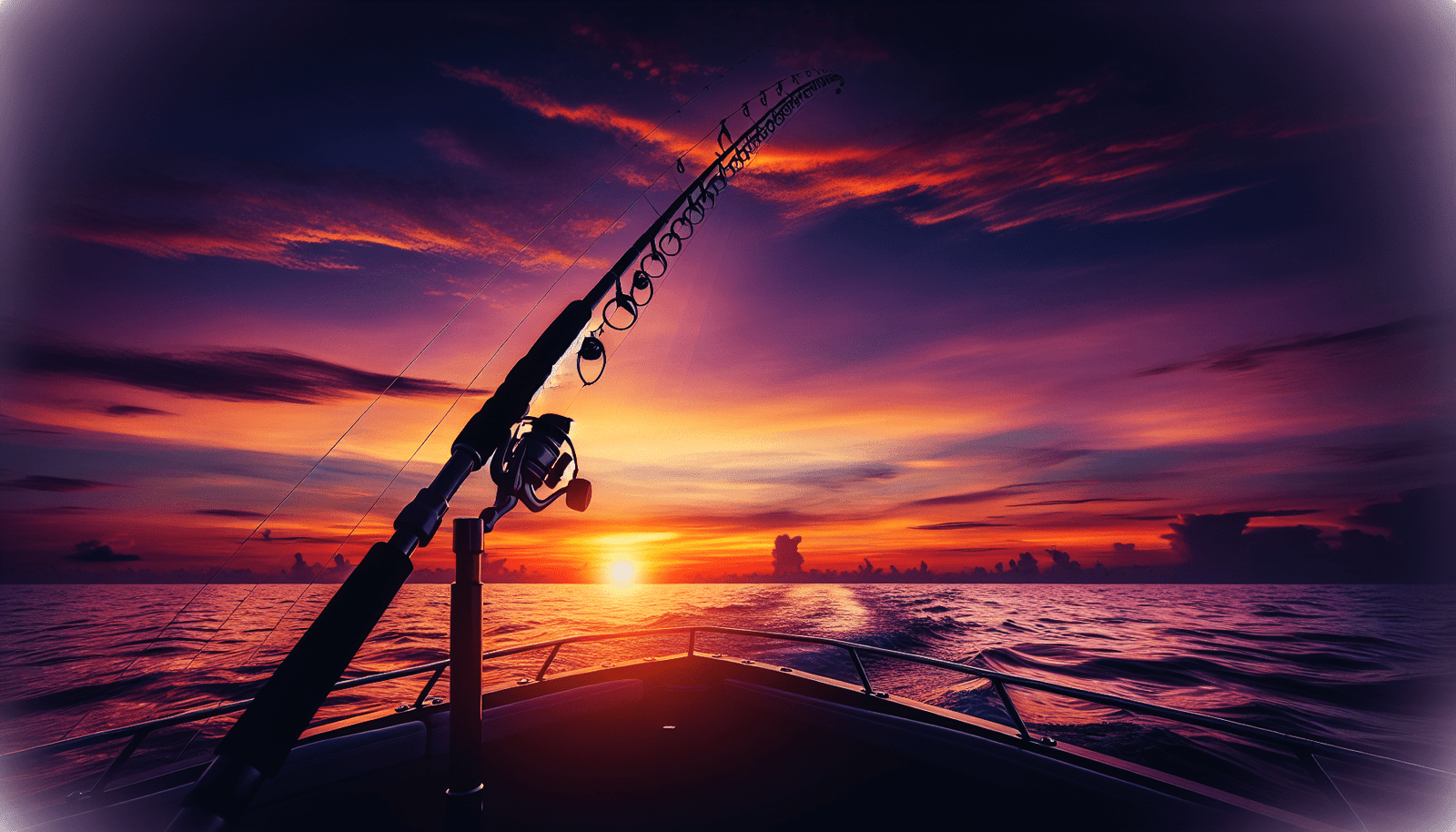Are you ready to embark on an exciting adventure of deep sea fishing? In this article, we will explore the essential techniques and safety tips that will help you make the most out of your fishing experience. From choosing the right tackle to staying safe on the open water, we’ve got you covered. So, grab your fishing gear and get ready to discover the world of deep sea fishing!
When it comes to deep sea fishing, choosing the right gear is crucial for a successful and enjoyable fishing trip. Before heading out to the open waters, it’s important to do some research on the fishing location, as different locations may require different techniques and equipment.
Researching the Fishing Location
Before you embark on your deep sea fishing adventure, it’s essential to research the fishing location. Find out what kind of fish species are prevalent in the area and what their habits and behaviors are. This information will help you determine the appropriate fishing techniques and gear to use.
Selecting the Appropriate Fishing Rod
A good fishing rod is an essential piece of equipment for any angler. When choosing a fishing rod for deep sea fishing, consider the type of fish you’ll be targeting, as well as the fishing technique you’ll be using. Longer rods are generally better for casting distance, while shorter rods provide better control over the fish. Choose a fishing rod that is strong, durable, and comfortable to handle for long periods.
Choosing the Right Fishing Reel
The fishing reel is another important component of your fishing gear. Similar to the fishing rod, the choice of reel depends on the type of fish and fishing technique. There are different types of reels, such as spinning reels, baitcasting reels, and trolling reels. Consider factors like line capacity, drag system, and gear ratio when selecting a reel.
Considering the Correct Fishing Line Strength
The fishing line strength is crucial as it determines the amount of weight and stress it can handle. When deep sea fishing, it’s recommended to use a fishing line with a higher pound test strength, usually between 20 to 50 pounds. This will ensure that you can handle larger fish and withstand the strong currents encountered in deep waters.
Essential Fishing Equipment
In addition to the fishing rod and reel, there are several other essential pieces of fishing equipment you should have when going deep sea fishing.
Fishing Hooks and Baits
Choosing the right fishing hooks and baits is essential for attracting and hooking the fish. Different fish species may require different types and sizes of hooks. Research the targeted fish species to determine the most effective hooks and baits to use.
Sinkers, Bobbers, and Floaters
Sinkers, bobbers, and floaters are used to control the depth at which your bait or lure is presented in the water. Sinkers help your bait sink to the desired depth, while bobbers and floaters keep your bait suspended in the water column. Use these tools to adjust the presentation of your bait based on the feeding patterns of the fish.
Fishing Nets and Gaffs
Fishing nets and gaffs are essential for safely landing and handling the fish. A fishing net is used to scoop up the fish once it’s close to the boat, while a gaff is a long pole with a sharp hook used to secure larger fish. Make sure to choose nets and gaffs that are appropriate for the size and weight of the fish you expect to catch.
Swivels and Snaps
Swivels and snaps are small, but crucial, pieces of fishing equipment that help prevent line twists and allow for easy attachment of lures or hooks. Swivels come in various sizes and strengths, so choose ones that are appropriate for your fishing line and intended catch.

Preparation for Deep Sea Fishing
Proper preparation is key to having a safe and successful deep sea fishing trip. Before setting sail, there are several important steps you should take.
Checking Weather Conditions
Before heading out to sea, always check the weather conditions. Pay attention to wind speeds, wave heights, and any storm warnings. It’s best to avoid fishing in severe weather conditions, as it can be dangerous and may result in poor fishing conditions.
Informing Others about Your Fishing Trip
It’s important to inform someone you trust about your fishing trip, especially if you’re going out alone or in a small boat. Provide them with information about your intended fishing location, estimated return time, and emergency contact numbers. This way, someone will know to raise the alarm if you don’t return on time.
Gathering Safety Equipment
Safety should be a top priority when going deep sea fishing. Make sure to have essential safety equipment on board, such as life jackets, a first aid kit, a fire extinguisher, and emergency signaling devices like flares or an emergency beacon. Familiarize yourself with the proper use of these safety tools before setting sail.
Preparing an Emergency Plan
It’s crucial to prepare for emergencies before heading out to sea. Create an emergency plan that includes procedures for different scenarios, such as engine failure, capsizing, or severe weather. Discuss the plan with your fishing companions and make sure everyone knows their role in case of an emergency.
Deep Sea Fishing Techniques
Deep sea fishing offers a variety of techniques, each suited for different types of fish and fishing conditions. Understanding these techniques will increase your chances of a successful catch.
Bottom Fishing
Bottom fishing involves dropping your bait or lure to the seabed and targeting fish that dwell near the bottom, such as grouper or snapper. Use heavy sinkers to keep your bait close to the seabed and be prepared for strong strikes from bottom-dwelling fish.
Trolling
Trolling involves dragging bait or lures behind a moving boat to attract fish that swim near the surface or in mid-water. Use lures that mimic the prey fish of your targeted species and vary your trolling speed to entice a strike.
Jigging
Jigging is a technique that involves vertically lifting and dropping a heavy lure, or jig, to attract fish. This technique works well for species like amberjack or tuna. Vary the speed and depth of your jigging to entice a strike.
Drift Fishing
Drift fishing involves allowing your bait or lure to drift naturally with the current. This technique is effective for targeting pelagic fish like mahi-mahi or sailfish. Adjust your drift and presentation based on the current and wind conditions to maximize your chances of success.

Understanding Fish Behavior
To increase your chances of success when deep sea fishing, it’s important to understand fish behavior and their preferences.
Knowing the Targeted Species
Research the behavior, feeding patterns, and habitat preferences of the fish species you’re targeting. Knowing their preferences will guide your choice of bait, presentation, and fishing technique, increasing your chances of attracting a strike.
Identifying Feeding Patterns
Fish have specific feeding patterns based on factors like the time of day, tide levels, and moon phases. Pay attention to these factors and adjust your fishing strategy accordingly. For example, fish are often more active during dawn and dusk, and some species feed aggressively during certain phases of the moon.
Locating Fish Hotspots
Fish tend to gather in areas with abundant food sources and favorable water conditions. Look for features in the ocean landscape such as reefs, drop-offs, or submerged structures, as they often attract fish. Additionally, pay attention to seabird activity, as they can indicate the presence of fish below the surface.
Observing Water Conditions
Water conditions play a significant role in fish behavior. Factors such as water temperature, clarity, and current strength can influence where fish are located and how they behave. Use a fish finder or consult local fishing reports to gather information on water conditions before heading out.
Caring for Catch and Release
If you plan to release the fish you catch, it’s essential to handle them properly to minimize injury and stress.
Handling Fish Properly
When handling a fish, it’s important to wet your hands before touching it to avoid removing its protective slime layer. Support the fish’s weight, especially larger ones, by cradling it with two hands. Avoid squeezing or applying excess pressure to the fish, as it can cause internal injuries.
Using Barbless Hooks
Using barbless hooks when practicing catch and release fishing is highly recommended. Barbless hooks are easier to remove from the fish, reducing the risk of injury. They also make it easier for the fish to shake off the hook on its own if it’s deeply hooked.
Minimizing Injury and Stress
Try to minimize the time the fish spends out of the water. Remove the hook quickly and efficiently, using proper tools like long-nose pliers or de-hooking devices. Avoid dragging the fish across the boat’s surface or handling it excessively, as these actions can cause unnecessary stress and injury.
Reviving Fish Before Release
If the fish appears exhausted after the fight, take the time to revive it before releasing. Hold it gently in the water, facing the current, and allow water to flow over its gills. This helps to oxygenate the fish and aids in its recovery. Once the fish shows signs of strength, it can be released to swim away.
Sea Sickness Prevention
Sea sickness can quickly turn a fun fishing trip into a miserable experience. Here are some tips to prevent or minimize sea sickness.
Choosing the Right Boat
When booking a deep sea fishing trip, choose a boat that is known for its stability and good motion characteristics. Catamarans or larger boats are often more stable than smaller vessels, reducing the chances of seasickness. Consult with the boat charter company to ensure a comfortable and stable fishing experience.
Avoiding Heavy Meals before Fishing
Avoid consuming heavy meals or spicy foods before your fishing trip, as they can contribute to seasickness. It’s best to eat small, light meals that are easy to digest. Consider bringing some snacks or light snacks onboard to keep your energy up without upsetting your stomach.
Staying Hydrated
Dehydration can worsen the symptoms of seasickness, so it’s important to stay hydrated throughout the fishing trip. Drink plenty of water or electrolyte-rich beverages to replenish fluids lost through perspiration or sea sickness.
Using Medications or Natural Remedies
There are various over-the-counter medications and natural remedies that can help prevent or alleviate seasickness. Consult with your doctor or pharmacist to find the right option for you. It’s generally recommended to take seasickness medication at least an hour before boarding the boat.
Safety Considerations While Fishing
Deep sea fishing can be an exciting and rewarding experience, but it’s important to prioritize safety to ensure a safe and enjoyable trip.
Wearing a Personal Flotation Device
Always wear a personal flotation device (PFD) or life jacket while out on the water. Make sure the PFD is properly fitted and in good condition. It’s also a good idea to have additional flotation devices onboard for emergencies, such as throwable flotation cushions or life rings.
Knowing First Aid
Having basic knowledge of first aid can be invaluable during a fishing trip. Take a first aid course or familiarize yourself with common fishing-related injuries and how to treat them. Make sure to have a fully stocked first aid kit onboard and know how to use its contents.
Having Marine VHF Radio
A marine VHF radio is an essential communication device for deep sea fishing. It allows you to communicate with other boats, the Coast Guard, or nearby vessels in case of emergencies or to receive weather updates. Familiarize yourself with the operation of the radio before setting sail.
Maintaining Boating Etiquette
When out on the water, it’s important to practice good boating etiquette. Be respectful of other anglers and boaters by maintaining a safe distance, following navigation rules, and avoiding excessive noise or disturbance. Keep the fishing environment enjoyable for everyone by practicing good manners and respect.
Deep Sea Fishing Regulations
To protect fish populations and ensure the sustainability of the marine environment, there are regulations in place for deep sea fishing. It’s important to familiarize yourself with these regulations and adhere to them.
Obtaining Required Licenses
Most jurisdictions require anglers to hold a fishing license before engaging in deep sea fishing. Make sure to obtain the necessary licenses and permits and follow any specific regulations or restrictions related to the fishing location or targeted species.
Following Size and Bag Limits
Size and bag limits are put in place to maintain healthy fish populations. They specify the minimum and maximum size of fish that can be kept and the number of fish that can be harvested per person or per boat. Follow these limits and consider practicing catch and release for species that are at risk or exceed your personal needs.
Understanding Protected Species
Certain fish species may be protected due to their vulnerable status or importance for ecological balance. Make sure to educate yourself about these protected species and their regulations. If you accidentally catch a protected species, handle it with care and release it promptly and safely.
Adhering to Fishing Seasons
Many fish species have designated fishing seasons to protect their reproduction and ensure their long-term survival. It’s important to know the fishing seasons for your targeted species and avoid fishing for them during their spawning or closed seasons. This will contribute to sustainable fishing practices and help maintain healthy fish populations.
Respecting Marine Environment
As anglers, it’s our responsibility to protect and respect the marine environment. Here are some ways you can help preserve the beauty and health of our oceans.
Proper Disposal of Waste
Always dispose of your waste properly, both on the boat and ashore. Avoid throwing any trash or fishing gear overboard, as these can harm marine life and contribute to pollution. Carry a trash bag onboard to collect all waste and dispose of it properly when you return to land.
Avoiding Anchoring on Coral Reefs
Coral reefs are delicate and essential ecosystems that need to be protected. Avoid dropping anchor on coral reefs to prevent physical damage and disturbance to these underwater habitats. Use mooring buoys or drift fishing techniques to avoid causing harm to coral reefs.
Protecting Seabirds and Marine Wildlife
Take care to avoid disturbing seabirds and marine wildlife during your fishing trip. Maintain a safe distance from nesting or resting areas and avoid chasing or harassing animals. Appreciate the beauty of marine wildlife from a distance and refrain from feeding or attracting animals with food scraps.
Participating in Coastal Cleanups
Join beach and coastal cleanup initiatives to contribute to marine conservation efforts. These cleanups help remove litter and debris that can harm marine life and pollute the ocean. By actively participating in such events, you can make a positive impact on the marine environment.
Deep sea fishing is an exhilarating pursuit that offers endless opportunities for adventure and excitement. By choosing the right fishing gear, respecting safety guidelines, and practicing responsible fishing, you can enjoy this thrilling activitywhile also protecting the marine environment for future generations. Remember to do your research, be prepared, and have respect for the fish, the ocean, and your fellow anglers. Happy fishing!


